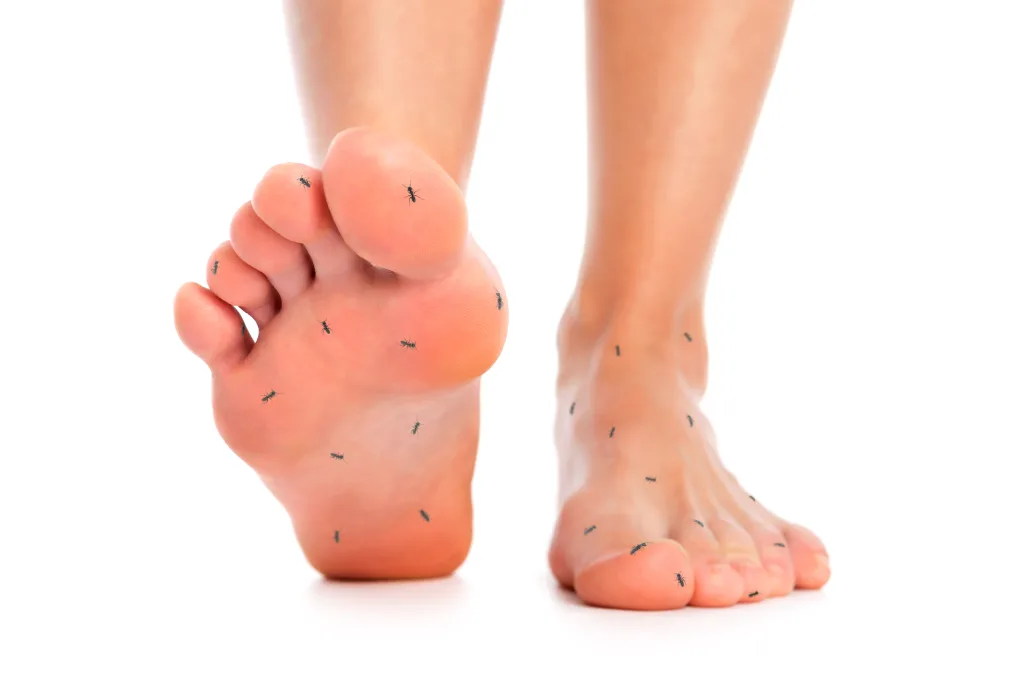
By Annette Brooks
With November being National Diabetes Awareness Month, we’re taking a look at a painful and prevalent associated condition—peripheral neuropathy. It’s estimated that up to 20 million people in the United States have some form of peripheral neuropathy, and a common cause is diabetes. Peripheral neuropathy can also result from injuries, infections, chronic medical conditions, exposure to toxins, endocrine disorders that lead to hormonal imbalances, and heavy alcohol consumption, among other things.
The link between diabetes and peripheral neuropathy
Diabetes mellitus, characterized by chronically high blood glucose levels, is a leading cause of peripheral neuropathy. It’s estimated that up to 70 percent of people with diabetes have mild to severe forms of nervous system damage. This damage can affect sensory, motor, and autonomic nerves, and usually results in varied symptoms.
When diabetic neuropathy occurs, typically the first nerve fibers to malfunction are the ones that travel the furthest from the brain and the spinal cord. Pain and numbness often are felt symmetrically in both feet followed by a gradual progression up both legs. Later, the fingers, hands, and arms may become affected.
Along with pins, needles, and burning and stabbing pain sensations, numbness is a troubling symptom of nerve damage due to diabetes. People who lose sensation are the ones most likely to get ulcers on their feet and to end up needing amputations.
The diagnosis
The painful symptoms of peripheral neuropathy are highly variable. Diagnosis may require several steps. An exam will involve taking a complete patient history; checking tendon reflexes, muscle tone, motor function and the sense of touch; collecting urine and blood specimens to screen for metabolic or autoimmune disorders; and tests to determine the nature and extent of nerve damage.
Follow-up tests may include an electroencephalogram (EEG) that records electrical activity of the nervous system; a spinal tap to test for breakdown of myelin (a sheath-like material that forms an insulating and protective coating around nerve fibers); brain scans using computed tomography (CT) and/or magnetic resonance imaging (MRI); nerve conduction velocity testing to see how fast electrical signals move; and electromyography, which measures the electrical impulses of muscles at rest and during contraction. In some cases, a biopsy may also be ordered to inspect the extent of nerve damage.
A range of treatment options
Most treatments for neuropathy are geared towards treating the symptoms. They usually involve prescription medications that mask symptoms and provide relief, including anticonvulsants or antidepressants, and in some severe cases, opiate analgesics.
When drugs are ineffective or side effects intolerable, an option for some patients may be use of an implanted electrical stimulator. The stimulator, called a neuromodulator, interrupts pain signals by producing a mild tingling sensation (paresthesia) in the painful area. Neuromodulation may be carried out through spinal cord stimulation or through peripheral nerve stimulation.
In addition, recent research has shown that cold laser therapy—which is painless and noninvasive—can help treat the underlying causes of neuropathy and aid symptom management. Cold laser therapy stimulates microcirculation (circulation of the blood in the smallest blood vessels) around the nerve fibers. Increases in microcirculation have been shown to help decrease inflammation, boost tissue regeneration, accelerate healing, and reduce neuropathic pain.
Some types of peripheral neuropathy develop suddenly, while others progress more slowly over many years. Because the changes are often subtle and happen as we age, people tend to ignore the signs of nerve damage, thinking it’s just part of getting older. If you have any symptoms of peripheral neuropathy, see your doctor right away. Early diagnosis and treatment offers the best chance for preventing further damage to your peripheral nerves.
Signs and Symptoms
Symptoms of peripheral neuropathy may depend on the kind of peripheral nerves that have been damaged. There are three types of peripheral nerves: motor, sensory and autonomic. Some neuropathies affect all three types of nerves, while others involve only one or two. The majority of people, however, suffer from polyneuropathy, an umbrella term for damage involving many nerves at the same time.
Symptoms of peripheral neuropathy often include:
- A sensation of wearing an invisible “glove” or “sock”
- Burning sensation or freezing pain
- Sharp, jabbing, shooting, or electric-like pain
- Extreme sensitivity to touch
- Difficulty sleeping because of feet and leg pain
- Loss of balance and coordination
- Muscle weakness
- Muscle cramping/twitching
- Difficulty walking or moving the arms
- Unusual sweating
- Abnormalities in blood pressure or pulse
Five Things to Know About Peripheral Neuropathy
- More than two out of every 100 persons are estimated to have peripheral neuropathy; the incidence rises to eight in every 100 people for people age 55 or older.
- There are more than 100 types of peripheral neuropathy, each with its own set of symptoms and prognosis. Diabetic neuropathy is a common type of sensory neuropathy. Sensory nerves control what you feel, such as pain or a light touch.
- Peripheral neuropathy usually can’t be cured, but you can help prevent it from getting worse. If an underlying condition like diabetes is at fault, your doctor will treat that first, then address the pain and other symptoms of neuropathy.
- Many chronic neuropathies worsen over time. Although peripheral neuropathy may be potentially debilitating, few forms are fatal.
- Lifestyle choices can play a role in preventing peripheral neuropathy. You may lessen your risk for many of these conditions by avoiding alcohol, correcting vitamin deficiencies, eating a healthy diet, losing weight, avoiding toxins, and exercising regularly.









